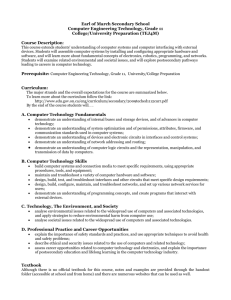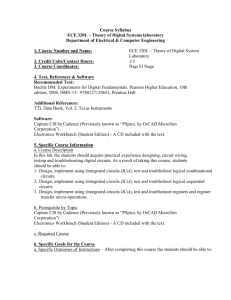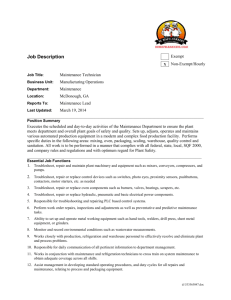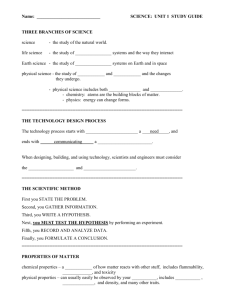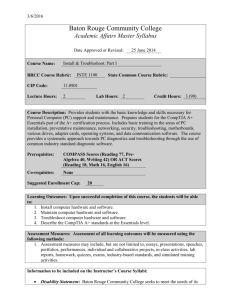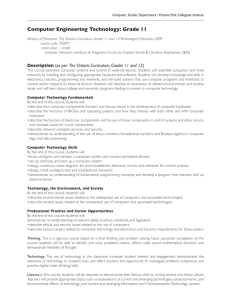Baton Rouge Community College Academic Affairs Master Syllabus
advertisement
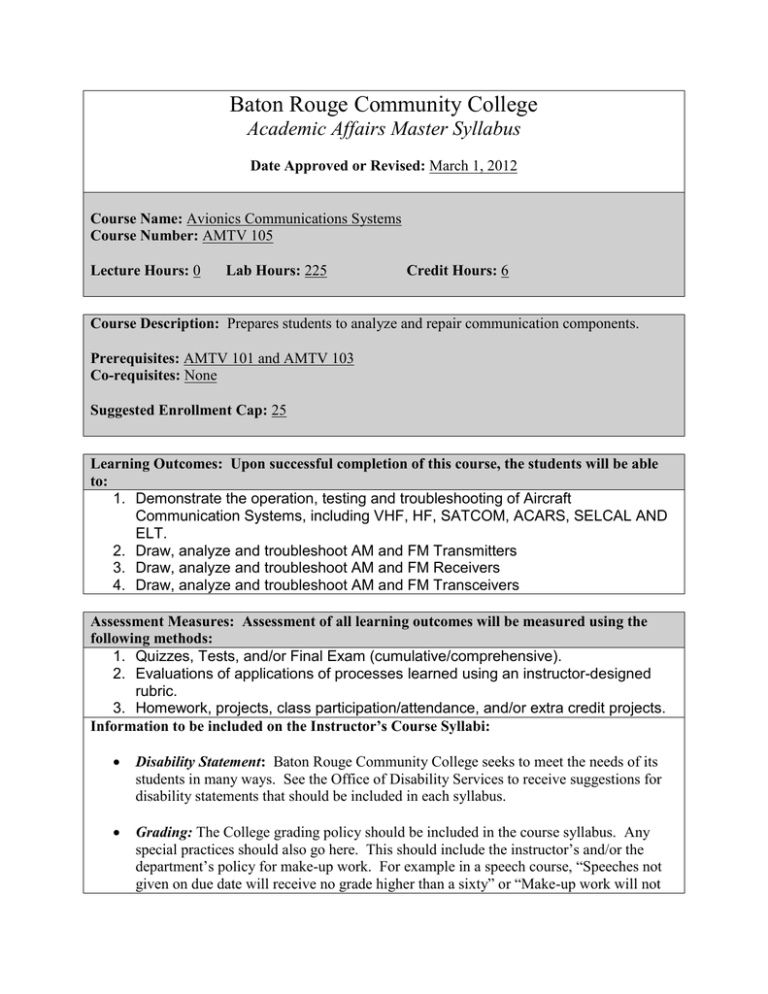
Baton Rouge Community College Academic Affairs Master Syllabus Date Approved or Revised: March 1, 2012 Course Name: Avionics Communications Systems Course Number: AMTV 105 Lecture Hours: 0 Lab Hours: 225 Credit Hours: 6 Course Description: Prepares students to analyze and repair communication components. Prerequisites: AMTV 101 and AMTV 103 Co-requisites: None Suggested Enrollment Cap: 25 Learning Outcomes: Upon successful completion of this course, the students will be able to: 1. Demonstrate the operation, testing and troubleshooting of Aircraft Communication Systems, including VHF, HF, SATCOM, ACARS, SELCAL AND ELT. 2. Draw, analyze and troubleshoot AM and FM Transmitters 3. Draw, analyze and troubleshoot AM and FM Receivers 4. Draw, analyze and troubleshoot AM and FM Transceivers Assessment Measures: Assessment of all learning outcomes will be measured using the following methods: 1. Quizzes, Tests, and/or Final Exam (cumulative/comprehensive). 2. Evaluations of applications of processes learned using an instructor-designed rubric. 3. Homework, projects, class participation/attendance, and/or extra credit projects. Information to be included on the Instructor’s Course Syllabi: Disability Statement: Baton Rouge Community College seeks to meet the needs of its students in many ways. See the Office of Disability Services to receive suggestions for disability statements that should be included in each syllabus. Grading: The College grading policy should be included in the course syllabus. Any special practices should also go here. This should include the instructor’s and/or the department’s policy for make-up work. For example in a speech course, “Speeches not given on due date will receive no grade higher than a sixty” or “Make-up work will not be accepted after the last day of class.” Attendance Policy: Include the overall attendance policy of the college. Instructors may want to add additional information in individual syllabi to meet the needs of their courses. General Policies: Instructors’ policy on the use of things such as beepers and cell phones and/or hand held programmable calculators should be covered in this section. Cheating and Plagiarism: This must be included in all syllabi and should include the penalties for incidents in a given class. Students should have a clear idea of what constitutes cheating in a given course. Safety Concerns: In some programs this may be a major issue. For example, “No student will be allowed in the safety lab without safety glasses.” General statements such as, “Items that may be harmful to one’s self or others should not be brought to class.” Library/ Learning Resources: Since the development of the total person is part of our mission, assignments in the library and/or the Learning Resources Center should be included to assist students in enhancing skills and in using resources. Students should be encouraged to use the library for reading enjoyment as part of lifelong learning. Expanded Course Outline: I. II. AM and FM Transmitters A. Define DSB, SSB and FM modulation. B. Draw, analyze and troubleshoot AM and FM RF oscillator circuits. C. Draw, analyze and troubleshoot buffer and multiplier circuits. D. Draw, analyze and troubleshoot RF power amplifier circuits. E. Draw, analyze and troubleshoot AM and FM modulation circuits. F. Draw, analyze and troubleshoot microphone circuits. G. Draw, analyze and troubleshoot balanced modulators and SSB filter circuits. H. Draw, analyze and troubleshoot AM and FM power supply circuits. I. Make power, frequency and modulation measurements of AM and FM transmitters. J. Align and troubleshoot AM and FM transmitters. K. Describe FCC rules pertaining to AM and FM transmitter maintenance and operation. AM and FM Receivers A. Draw, analyze and troubleshoot receiver audio voltage and power amplifiers and speaker/headphone circuits. B. Draw, analyze and troubleshoot AM and FM detector circuits. C. Draw, analyze and troubleshoot AM IF amplifier circuits. D. E. F. G. H. I. J. III. IV. Draw, analyze and troubleshoot FM IF amplifier and limited circuits. Draw, analyze and troubleshoot receiver oscillator and AFC circuits. Draw, analyze and troubleshoot RF mixer/hetrodyne circuits. Draw, analyze and troubleshoot receiver RF amplifier circuits. Draw, analyze and troubleshoot AVC/AGC circuits. Draw, analyze and troubleshoot receiver power supplies. Make receiver sensitivity, selectivity, bandwidth, image rejection and adjacent channel rejection measurements. K. Align and troubleshoot AM and FM receivers. AM and FM Transceivers A. Analyze and troubleshoot transceiver control, metering and switching circuits. B. Analyze and troubleshoot transceiver frequency synthesizers and phase locked loop circuits. C. Analyze and troubleshoot squelch circuits. D. Align and troubleshoot transceivers. Electromagnetic Wave Emissions A. Define the radio frequency spectrum. B. Define types and classification of RF emissions. C. Define the characteristics of radio waves. D. Define radio wave propagation method. E. Define the basic types of antennas. F. Draw the voltage and current relationships and radiation patterns for the basic types of antennas. G. Solve signal strength problems and measure signal strength. H. Solve problems pertaining to antenna length, propagation velocity and frequency. I. Define methods for antenna tuning, gain and directivity. J. Define transmission lines in terms of electrical and physical properties. K. Define standing waves, cause and effect, and measure standing wave ratios. L. Define tuned transmission lines and describe applications. M. Draw voltage, current and impedance relationships for tuned transmission lines. N. Compute transmission line losses. O. Construct transmission lines. P. Define waveguides, resonant cavities and their applications.
